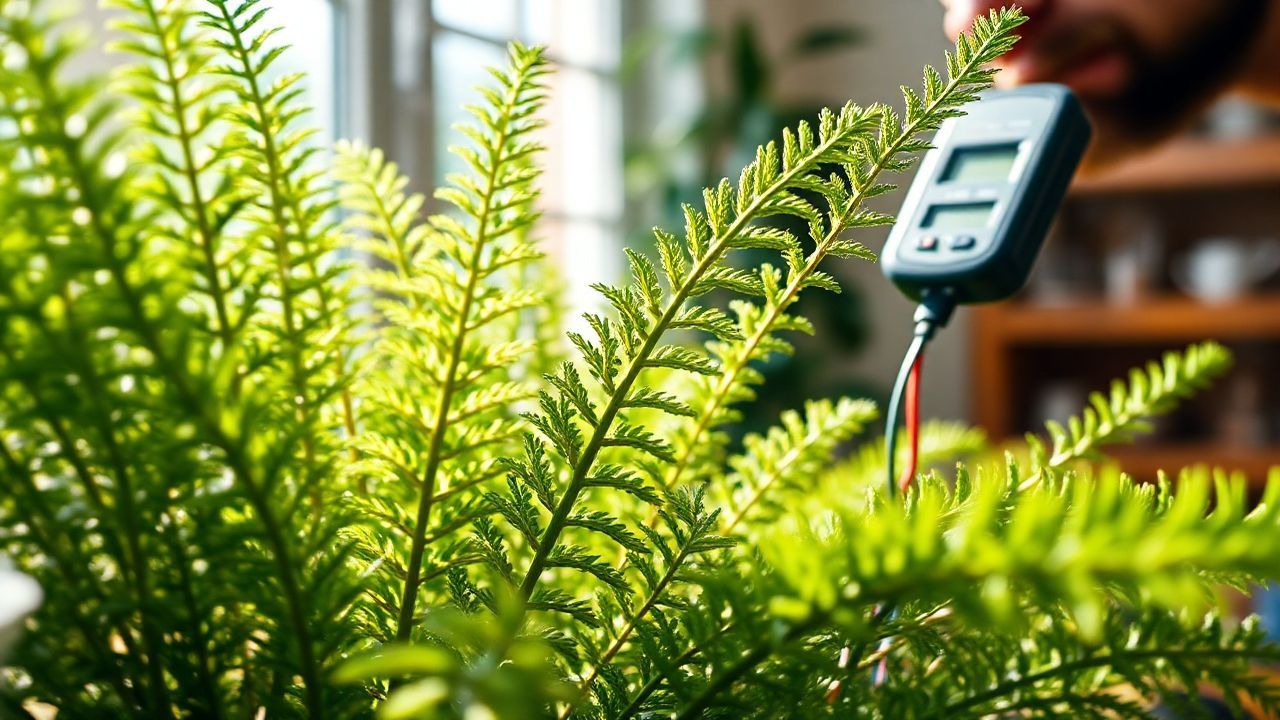Introduction to asparagus fern care
Asparagus ferns are popular houseplants known for their feathery, fern-like foliage. However, when these plants start turning yellow, it can be a sign of distress. Here are several possible reasons why your asparagus fern may be yellowing:
Overwatering: One of the most common causes of yellowing asparagus ferns is overwatering. Asparagus ferns prefer well-draining soil and should only be watered when the soil is dry to the touch. Overwatering can lead to root rot, which can cause the plant to turn yellow and eventually die.
Underwatering: While overwatering is a problem, underwatering can also cause yellowing in asparagus ferns. These plants need regular watering to stay healthy and hydrated. If the soil dries out completely, the asparagus fern will wilt and its leaves will turn yellow.
Lack of sunlight: Asparagus ferns prefer bright, indirect light. If the plant is placed in a location that is too dark, it may not get enough sunlight to produce chlorophyll, the pigment that gives plants their green color. This can lead to the leaves turning yellow.
Nutrient deficiency: Another possible cause of yellowing asparagus ferns is a nutrient deficiency. These plants need regular fertilization to replenish the nutrients in the soil. If the plant is not getting enough nutrients, it may start to turn yellow.
Pests or diseases: Pests or diseases can also cause asparagus ferns to turn yellow. Spider mites, aphids, and mealybugs are common pests that can infest asparagus ferns and suck the sap from their leaves, causing them to turn yellow. Diseases such as Botrytis blight and Rhizoctonia root rot can also cause yellowing in asparagus ferns.
Common causes of yellowing leaves (overwatering, underwatering, light issues)
Another potential cause of yellowing leaves is insufficient light. Asparagus ferns prefer bright, indirect light, and prolonged exposure to low light can cause the leaves to become pale and yellow. Ensure that your fern is placed in an area that receives ample natural light, or consider supplementing with artificial light during the winter months.
Additionally, nutrient deficiencies can also contribute to yellowing leaves. Asparagus ferns require regular fertilization to replenish essential nutrients. A lack of nitrogen, in particular, can cause the leaves to turn yellow and stunted. Use a balanced fertilizer diluted to half strength and apply it monthly during the growing season.
How to diagnose plant problems
Yellowing leaves on an asparagus fern can indicate several potential problems, including:
Overwatering: Excessive moisture can lead to root rot, which causes leaves to turn yellow and wilt. Check the soil; it should be slightly moist but not soggy. Avoid overwatering and allow the soil to dry out slightly between waterings.
Underwatering: Lack of adequate water can also cause yellowing, especially during hot, dry periods. Ensure the soil is evenly moist but not waterlogged. Water deeply and frequently during hot weather.
Nutritional deficiencies: Iron or nitrogen deficiencies can cause yellowing of older leaves. Fertilize the plant regularly with a balanced, slow-release fertilizer.
Sunlight: Asparagus ferns prefer bright, indirect light. Too much direct sunlight can scorch the leaves and cause them to turn yellow. Move the plant to a location with more shade.
Pests: Spider mites and aphids can infest asparagus ferns, sucking sap and causing leaves to yellow and drop. Inspect the plant carefully for any signs of infestation and treat with an appropriate insecticide.
Diseases: Fungal diseases, such as leaf spot or botrytis, can also cause yellowing and other leaf damage. Remove infected leaves and treat the plant with a fungicide.
To properly diagnose the cause of yellowing in asparagus ferns, consider the plant’s overall health, growing conditions, and any recent changes in its environment. By addressing the underlying issue, you can restore the plant’s health and prevent further yellowing.
Steps to revive a yellowing fern
To revive a yellowing asparagus fern, take the following steps:
Identify the cause of yellowing: Determine if the yellowing is caused by overwatering, underwatering, nutrient deficiency, sunlight exposure, or pests. If the soil is soggy, water less often. If the soil is dry, water more frequently. If the fern has been exposed to too much direct sunlight, move it to a shadier location. If the fern is suffering from a nutrient deficiency, fertilize it with a balanced fertilizer. If pests are present, treat the fern with an appropriate insecticide.
Adjust watering schedule: Water the fern deeply and regularly, allowing the soil to dry slightly between waterings. Do not let the soil become soggy or completely dry.
Provide adequate light: Asparagus ferns prefer bright indirect light. If the fern is not receiving enough light, move it to a brighter location. However, avoid exposing the fern to direct sunlight, as this can scorch the leaves.
Fertilize regularly: Fertilize the fern monthly during the growing season with a balanced fertilizer. Do not over-fertilize, as this can damage the roots.
Repot if necessary: If the fern is rootbound, it may need to be repotted into a larger container. When repotting, use a potting mix that is well-draining and rich in organic matter.
Control pests and diseases: Asparagus ferns are susceptible to a few pests and diseases, including aphids, mealybugs, and spider mites. Treat infestations promptly with an appropriate insecticide. Inspect the fern regularly for signs of disease, such as yellowing leaves, brown spots, or powdery mildew. Treat diseases with an appropriate fungicide.
Provide humidity: Asparagus ferns prefer humid environments. Mist the fern with water regularly or place the fern on a tray of pebbles filled with water.
Prune yellowed leaves: Remove any yellowed or damaged leaves to promote new growth.

Leave a Reply